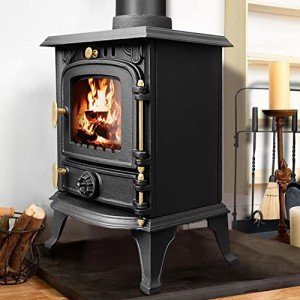This Is The Advanced Guide To British Multi Fuel Stoves
The Comprehensive Guide to British Multi-Fuel Stoves
Multi-fuel stoves have actually become progressively popular in British households, supplying an effective and flexible heating service that is both practical and attractive. As energy expenses continue to increase and ecological factors to consider end up being more important, the appeal of these stoves, which can burn different kinds of strong fuels (including wood, coal, and biomass), is more powerful than ever. This short article checks out the advantages, types, and factors to consider for selecting a multi-fuel stove in the UK while offering some valuable FAQs.
Understanding Multi-Fuel Stoves
Multi-fuel stoves are created to run on various types of fuel, making them a flexible alternative for house owners. These stoves include a specifically built combustion chamber that permits the user to change between wood, coal, and other strong fuels without considerable adjustments or adjustments. This flexibility not just enhances convenience but also promotes effective heating by making the most of fuel use.
Advantages of Multi-Fuel Stoves
Adaptability: The capability to utilize various fuels indicates that property owners can choose the most cost-effective alternative based upon availability and price.
Ecological Considerations: Burning wood from sustainable sources can be a carbon-neutral choice. Multi-fuel stoves permit users to go with greener fuels, such as biomass logs.
Effective Heating: Multi-fuel stoves are designed to produce high levels of heat, keeping a home warm during the cold months.
Cost-Effective: In numerous locations, using alternative fuels like wood can cause lower heating costs compared to traditional gas or electric heating systems.
Aesthetic Appeal: Modern multi-fuel stoves come in various designs and can include a stylish aspect to home decor.
Types of British Multi-Fuel Stoves
Multi-fuel stoves in the UK are available in different styles and options, accommodating various choices and requirements. The main types include:
1. Wood Burners
- Developed mostly for burning wood.
- Typically constructed with a large glass door for a fantastic view of the flames.
- Usually more effective than traditional open fires.
2. Coal Burners
- Enhanced for burning coal, with features that improve combustion efficiency.
- Might have a grate system for ash management and effective combustion.
3. Combination Stoves
- Efficient in burning both wood and coal, offering the best of both worlds.
- Versatile for property owners who desire options depending on fuel availability.
4. Biofuel Stoves
- Created to burn specially created biofuels that are thought about more eco-friendly.
- Can sometimes be used inside your home without requiring a flue.
How to Choose the Right Multi-Fuel Stove
Picking the ideal multi-fuel stove involves several considerations to guarantee it fulfills the particular needs of the house owner. Here's a checklist to assist the decision-making process:
- Size and Output: Calculate the needed heating output based upon the size of the space(s) and insulation quality.
- Fuel Availability: Consider the schedule and cost of different fuel enters your area.
- Design and Aesthetic: Choose a style that complements the existing design.
- Efficiency Ratings: Look for designs that have high effectiveness rankings for better fuel preservation.
- Setup and Ventilation Requirements: Evaluate the area for installation and guarantee proper ventilation.
Important Features to Look For
- Adjustable air flow controls for workable combustion.
- A strong and heat-resistant glass door.
- An integrated ash pan for simple cleaning.
- Compliance with UK guidelines, including the Ecodesign Directive.
Setup and Maintenance
Once the best stove is picked, appropriate setup and upkeep are vital for security and performance. Homeowners must always look for expert installation to guarantee that all security standards are satisfied. Routine maintenance is required to keep the stove functioning at its best. This includes:
- Chimney Sweeping: An annual sweep to avoid chimney fires and ensure proper airflow.
- Regular Cleaning: Regularly eliminate ash and inspect the stove for wear and tear.
- Fuel Quality: Use high-quality fuel to keep combustion performance.
Often Asked Questions (FAQs)
1. Can I use a multi-fuel stove as the primary heating source?
Yes, many house owners successfully utilize multi-fuel stoves as the primary source of heating in their homes, especially in backwoods.
2. Do multi- Multi Fuel Stove Small need a special flue system?
While many multi-fuel stoves can utilize existing flue systems, it is constantly best to seek advice from with a professional installer to verify compatibility.
3. How frequently should I clean my multi-fuel stove?
Routine cleansing is encouraged, with more extensive inspections and maintenance required yearly or semi-annually, depending on use.
4. Can I burn damp wood in my multi-fuel stove?
Burning wet wood is not recommended, as it produces less heat and more smoke, which can result in build-up in the chimney.
British multi-fuel stoves use an efficient, practical, and environmentally friendly service for home heating. With different types offered, property owners have the flexibility to pick the very best alternative based on their needs and choices. Proper installation and routine upkeep are essential to making sure safety and lengthening the life of the stove. Whether for heating or aesthetic appeal, a multi-fuel stove can be a valuable addition to any home.
- * *
Comparison Table of Popular Multi-Fuel Stoves
Brand
Fuel Types
Heating Output (kW)
Efficiency (%)
Price Range (₤)
Stovax
Wood, Coal
5 – 15
80
800 – 2,500
Clearview
Wood, Coal
5 – 10
85
1,000 – 3,000
Charnwood
Wood, Coal, Biomass
4 – 12
78
700 – 2,000
Dunsley
Wood, Coal
7 – 15
77
600 – 2,200
Esse
Wood, Coal
5 – 12
83
900 – 2,800
This comprehensive introduction functions as a resource for anyone thinking about the addition of a multi-fuel stove to their home, combining effectiveness, adaptability, and style into a package that satisfies modern heating needs.
